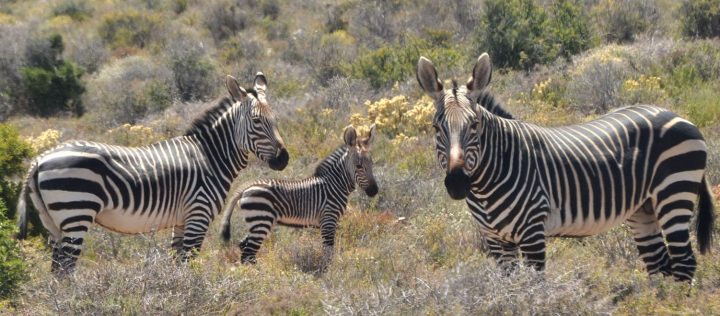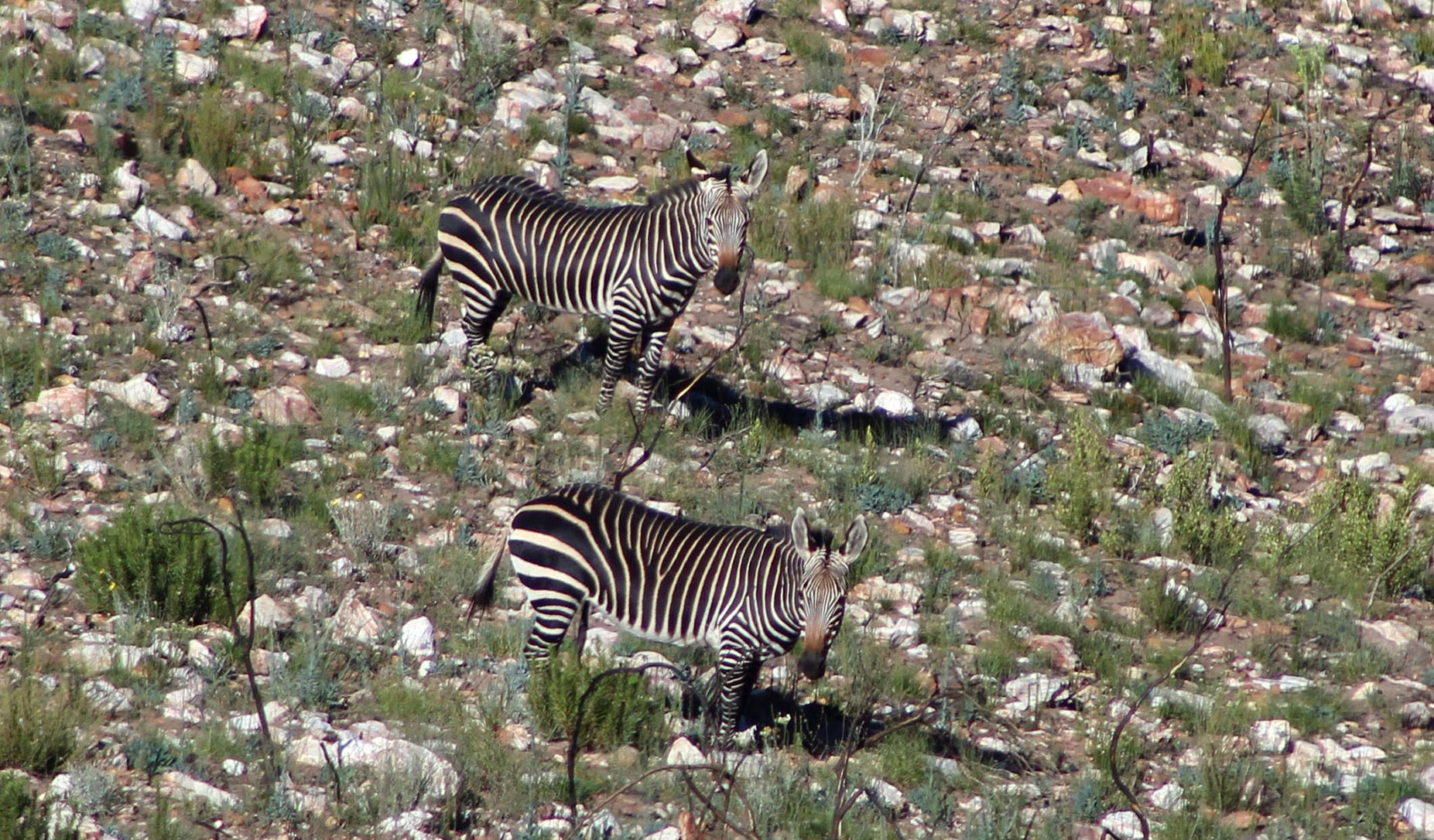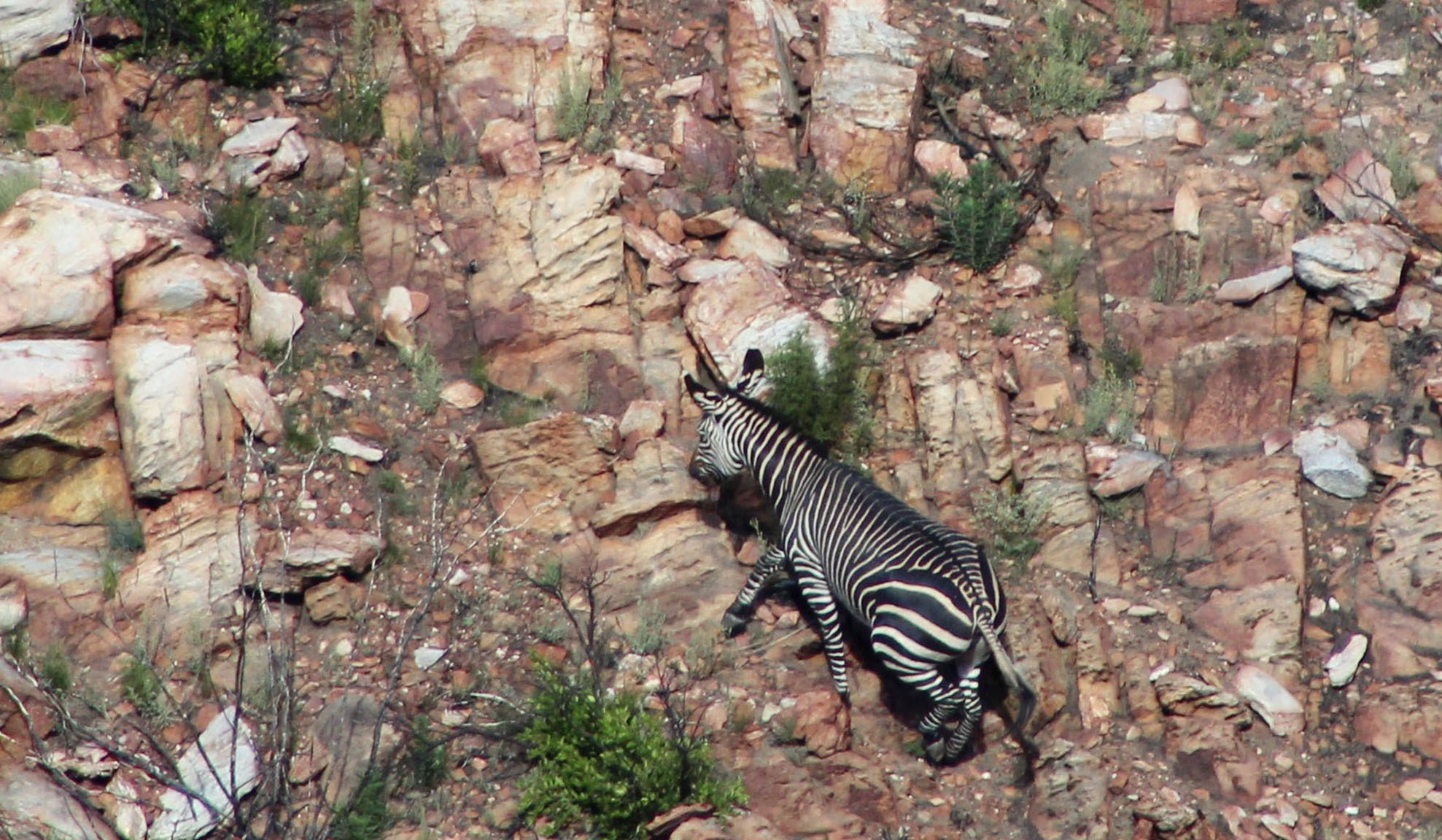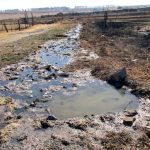GENE GENIE
Stallion earns his stripes in Cape mountain zebra ‘genetic rescue’ project

A zebra stallion named GB42 has sired a globally unique foal, helping to boost the genetic health of the Cape mountain zebra – a formerly endangered species that very nearly joined the dodo, quagga and passenger pigeon on the road to extinction just 80 years ago.
Once widely distributed across the southwestern mountains of South Africa, the population of the endemic Cape mountain zebra had plummeted to fewer than 60 animals at the beginning of the 20th century due to hunting and the expansion of farming land.
Yet their plight failed to move the then Lands Minister, Jan Kemp, who, on being approached for funds to buy land for a new Mountain Zebra reserve in 1936, dismissed these animals as “just a lot of donkeys in football jerseys”.
Fortunately, the tiny and scattered remnant populations were subsequently protected in three new reserves – the Mountain Zebra National Park (Cradock), Kammanassie and Gamkaberg.

Slightly smaller than the more common Burchell’s zebra, the Cape mountain species does not have shadow stripes. They also have larger ears, a dewlap under their necks and a very distinctive ‘grid iron’ pattern above their rumps. Despite the stark contrast between black and white, stripes are a form of camouflage which breaks up an animal’s shape to make them less visible when standing still. (Photo: Tony Carnie)
The odds were stacked heavily against the survivors, yet the story of their recovery ranks among South Africa’s greatest achievements in protecting biological diversity. Now, there are close to 5,000 spread out in nearly 75 state, provincial and private reserves.
But, there’s a catch.
According to Cape Nature scientist Coral Birss, more than 90% of the total population is descended from the Cradock survivors alone.
Because all three of the original sub-populations are inbred with low genetic variation, mammal experts have been calling for the gene pool to be strengthened by “mixing” their bloodlines under controlled conditions.

Once dismissed as mere ‘donkeys in football jerseys’, Cape mountain zebras are specially adapted for life in rugged mountain terrain, with their hooves being harder and faster-growing than plain zebras. (Photo: Tony Carnie)
While some of the Cradock and Kammanassie zebras have been combined previously, the small Gamkaberg population has been separated from the two larger populations for almost a century.
This is where GB42 fits in.
Along with two other stallions from Gamkaberg, he was moved to a new “genetic mixing bowl” project at the Sanbona Wildlife Reserve in the Western Cape in 2021 and later introduced to a group of mares descended from the Cradock population.
Sadly, two of the Gamkaberg stallions died – one of unknown causes and the other from a severe tooth abscess.
The success of the genetic rescue project now hinged on the only remaining stallion, five-year-old GB42.
“It has now become clear that he has met his brief,” Cape Nature said in a statement this week after Sanbona ecologist Liesl Vorster spotted GB42 with a Cradock mare and their precious young offspring.
“The foal is the only Cape mountain zebra in the world which contains both Cradock and Gamkaberg genes. All eyes will be on this little herd in the hopes of another union that will combine all three genetic stocks and help restore what remains of the genetic diversity that was lost to the species many years ago.”
In a status report written nine years ago, mammal experts Halszka Hrabar and Graham Kerley warned that the threat of inbreeding and genetic drift had become “very real” as there had been minimal gene flow between the three isolated subpopulations
Other researchers have suggested that because of its small gene pool, the species has an impaired immune system and has become more vulnerable to certain diseases, such as equine sarcoidosis (skin tumours). DM





















 Become an Insider
Become an Insider
An ENORMOUS vote of thanks to those who are doing this incredibly valuable work. Heroes in your own right!
He’s earned his stripes.
No foaling around please, GB42 is a true cape mounting Zebra.
Got all that, nice!
Thank you for this story of hope – and thanks to the hard working scientists who are making this possible.